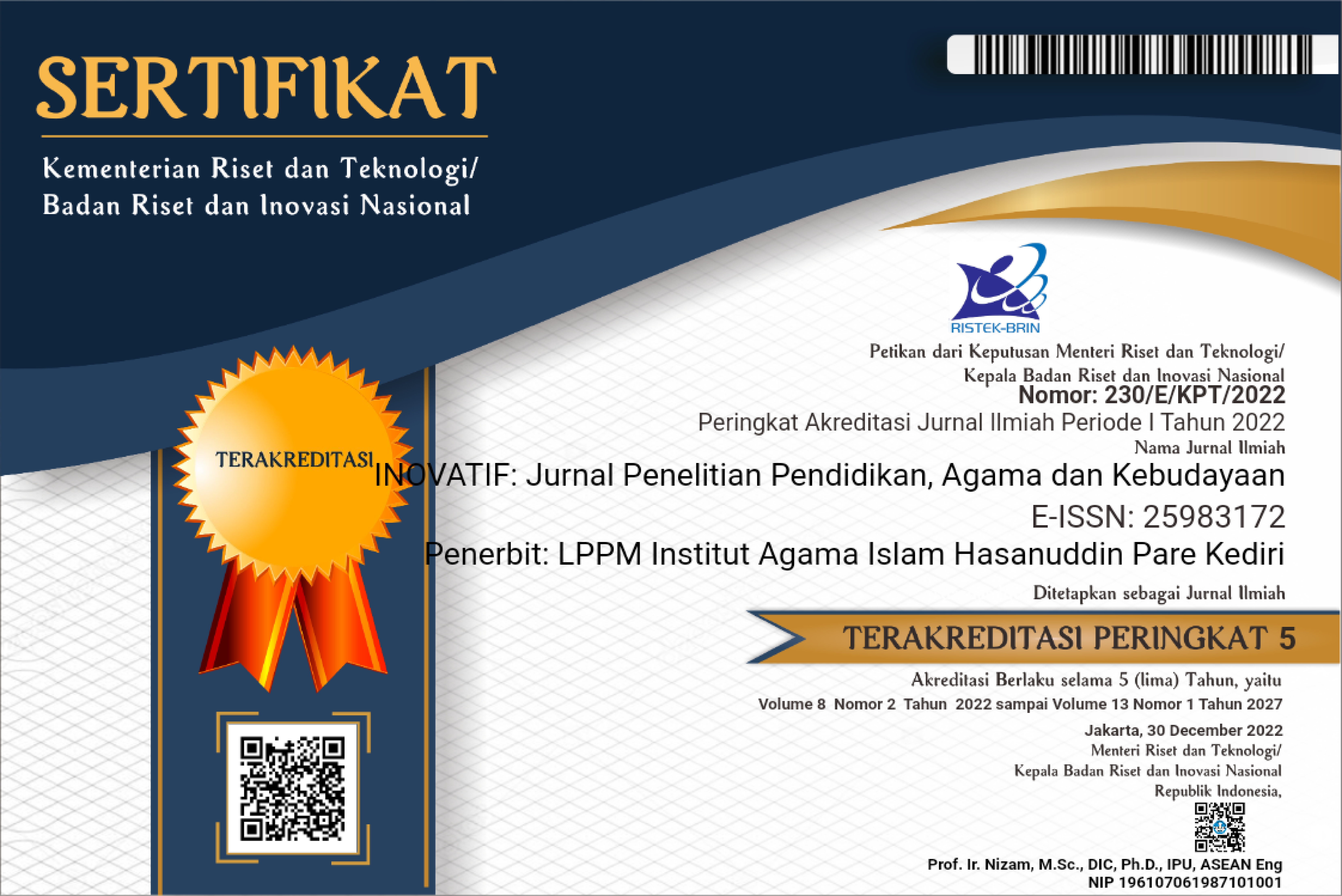Case Study of Second Language Acquisition: What Contributes to Speaking Proficiency
DOI:
https://doi.org/10.55148/inovatif.v5i1.93Keywords:
speaking, language input, conducive environment, motivationAbstract
The purpose of this study is to investigate: what contributes to speaking proficiency in second language acquisition. In this case the researcher intends to investigate how language input, conducive environment, and motivation influence students’ speaking proficiency. To develop a deep understanding to the success of speaking proficiency, a qualitative research was conducted. Further, since this study intended to figure out the cause or effect relationship between behavior and outcome, a descriptive qualitative was used to describe the process of succeeding the subjects’ speaking proficiency. The learner who is not less than 12 years old is the potential subject. The subject should qualify to have categorized as “good†level of speaking proficiency minimum based on the test. Research instruments used are in-depth interview and questionnaire. From the finding, the result shows that three aspects, language input, conducive learning environment, and motivation, have contribution in deciding the level of English speaking proficiency.
Downloads
References
David Nunan, “The Impact of English as a global Language on Educational Policies and Practices in the Asia-Pacific Region.†TESOL Quarterly, 37/4 (2003) 589–613.
Ellis, R, Second Language Acquisition. (Oxford: Oxford University Press, 1993).
Findley, B, and Varble, D, “Creating a Conducive Classroom Environment: Classroom Management Is the Keyâ€, College Teaching Methods & Styles Journal – 2/3 (2006).
Gass S, Selinker L, Second language acquisition: an introductory course, (NJ: Lawrence Erlbaum Associates, 1994).
Govender, D.1997. “Appropriate theme: Overcoming Barriers to access & success, Creating an environment conducive to adult distance learningâ€, Personnel Practitioner: Training & Development (SA Board for Personnel Practice), (South Africa, 1997).
Kumaravadivelu,B, Understanding Language Teaching: From Method to Post Method. (New Jersey: LEA, 2006).
Kwa, Sk, “Medical Education Notes for the Primary Care Teachers, How do adults learn?â€, Malaysian Family Physician, (Malaysia: 2007).
Latham, G.P. & Pinder,C.C, “Work Motivation Theory and Research at the Dawn of the Twenty First Centuryâ€, Annu.Rev. Psychol, 56 (2004), 485-516.
Srikanthan,G and Dalrymple, J.F, “A conceptual overview of a holistic model for quality in higher educationâ€, International Journal of Educational Management, 21/3 (2007).
Yang,P.O, “Input, Interaction, and Language Learning,†(Unpublished Thesis, Ming Chuan University, 2007).
Downloads
Published
How to Cite
Issue
Section
License
Please read Copyright Notice for Inovatif: Journal of Research on Religious Education and Culture









